These illustrations were done for a book by the writer Paula Sá, and published by Opera Omnia.
It was about an old painter (of walls ) who started to paint pigeons instead of walls, due to his lack of strength.
On the images bellow I will try to explain how I resolved each image.
* * *
Estas ilustrações foram feitas para o livro "O velho que pintava pombas". O mesmo foi escrito pela autora Paula Sá e editado pela editora Opera Omnia.
Trata-se da história de um antigo pintor de paredes que na sua velhice começou a pintar as pombas da cidade.
Nas imagens abaixo irei tentar explicar como resolvi cada imagem.
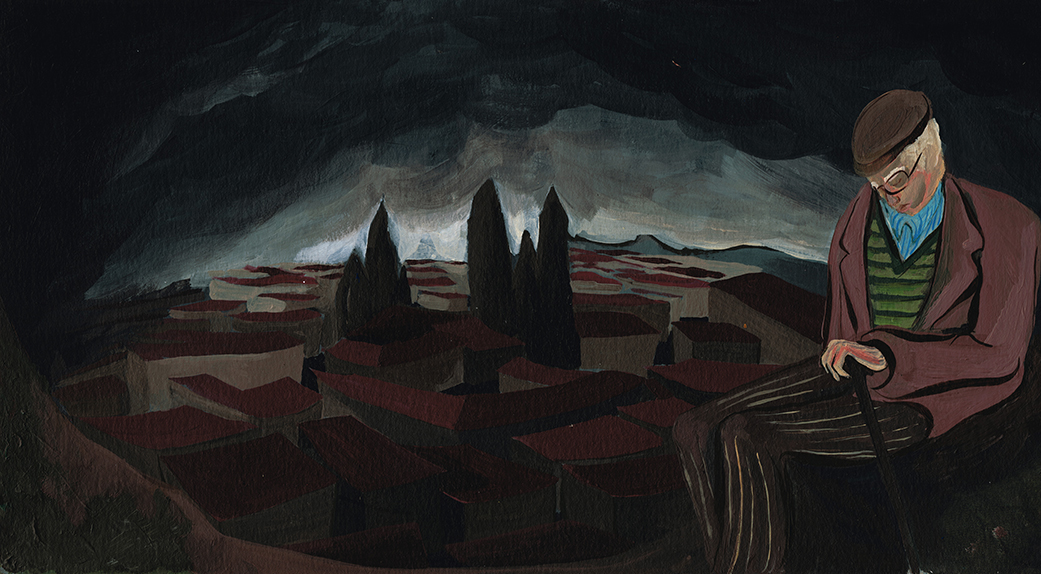
Detail:
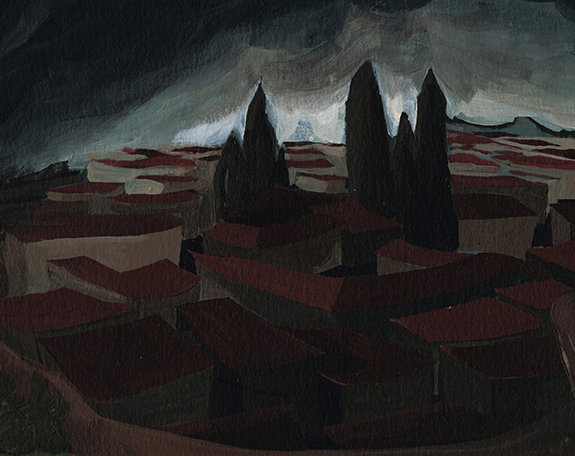
On the illustration above I had to imagine a grey city and an old man who looked really tired and with not many reasons to live. I had to leave space for the words on the top left side and on the down right side.

On the above illustration I had to illustrate the old man and the building where he lived.
I took advantage of the scenery to improve the notion that he was alone, by putting him, not just small, but on the corner, as if he was falling to a scenery that doesn't look friendly.

Here I did the same but in another view. This illustration was about time and how his house looked so old and with not much life. I deformed the house in order to put him small in a corner.
The house looks empty and there is a little soul, waiting to die, in the top left corner.

As the old man tried to paint the walls of his house, he understood that his strenght was lacking, and walls seemed, all of a sudden, too big for him.
I illustrated this by making him small in relation to a wall that keeps growing.
The letters of the text were flowing in the same direction as the walls were going.
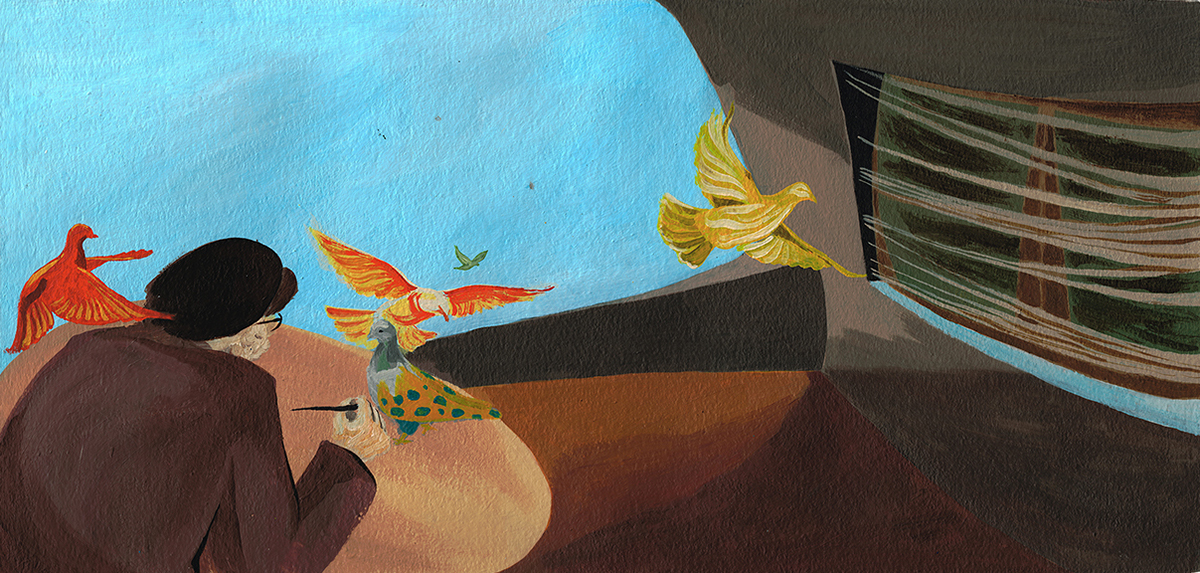
When the old man understood that he could paint pigeons instead, his old house suddenly became more colorful (at least that's what I tried to put into the illustration). His balcony became the studio for his taste of painting. The birds would come out with colorful padrons.
I illustrated this by making the blue of the sky stand out (instead of the grey of his house), and used the grey to make a high contrast with the colors of the birds.
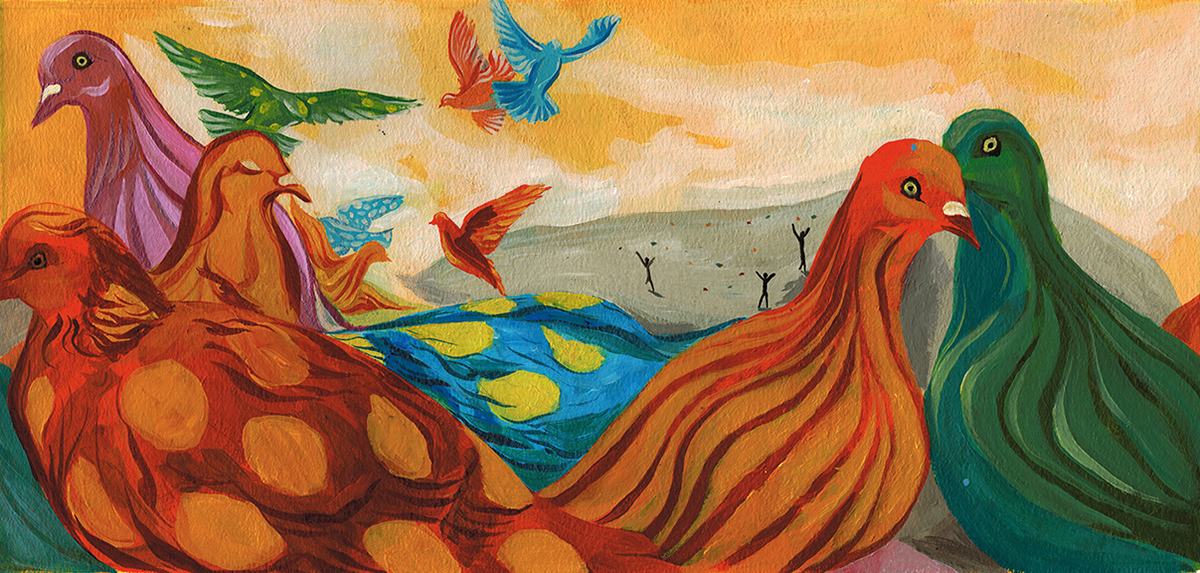
The story proceeds and the old man was so creative that he did all kinds of patterns. All the people were amazed with the pegions.
For this, I decided to work with different views of the pegions, being ones nearer than others.
This way it gives the sensation that there were a lot of painted pegions without having to fill the sky with small birds. Also, it is better to show the details of the patterns at the same time that another view, at a distance, is shown, illustrating both scenes present in the text.
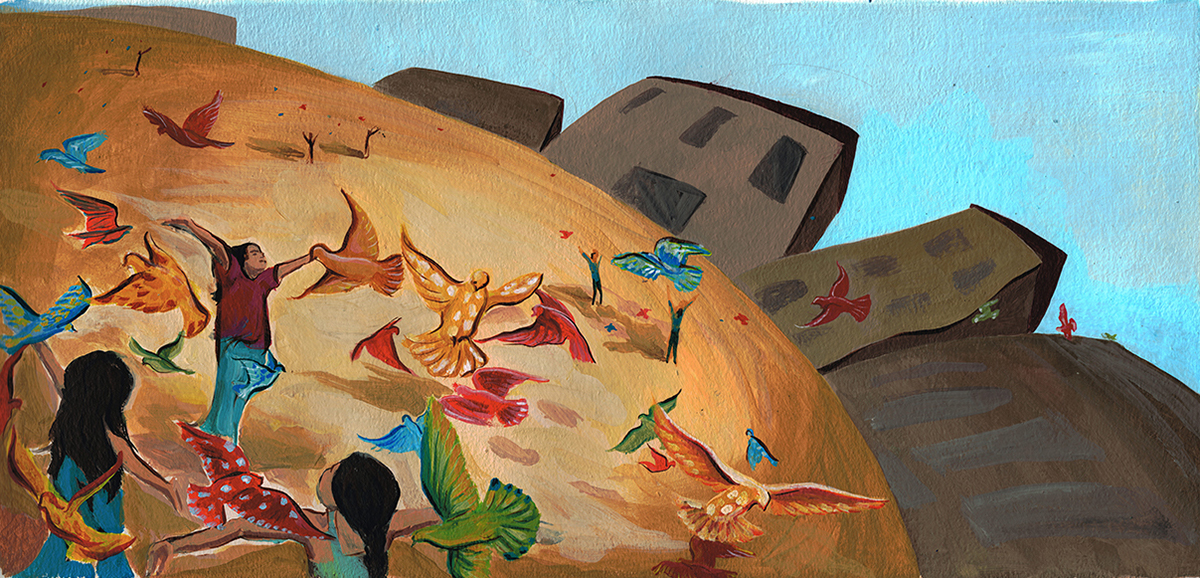
On the illustration above I had to show a view of all the children playing with the pegions. The house of the old man was still featured in the text so I chose to include both the house and the children. I did this by using a fish-eye type of view, where one can see what is close at the same time as what is far away from us.

Ot the image above, I had to illustrate the children playing with the pegions and the people who came from all over the world to see them live.
Instead of drawing them one by one, Idecided to do an abstractization of what many people together would look like. I also made the background in a colorful way in order to emphasize the colors of the pegions.
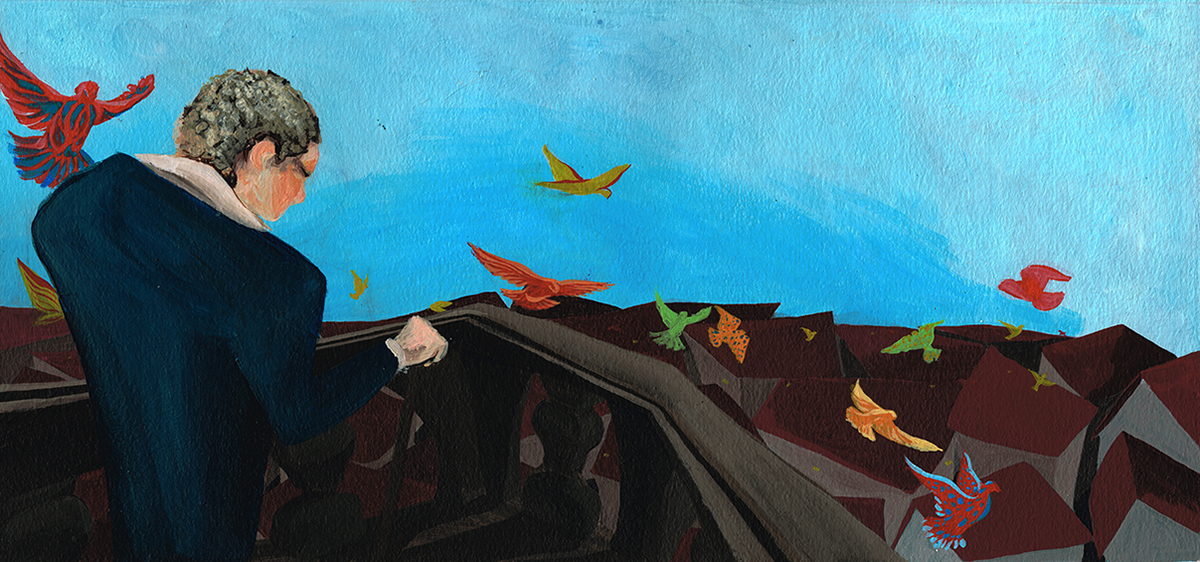
On the image above, I had to illustrate the man who had control over the town forhibiting the existence of painted pegions.
For this I put the man in a tower so that he could be bigger than the city itself in the image. Then, I chose an angle as if he was higher than the viewer and I increased the lenght of his back to make him look stronger in appearance. The face is also red-colored to give that sensation as well.

The old man was sad because his painting pleasure was destroyed. However, spring was coming and swallows started to appear in his balcony.
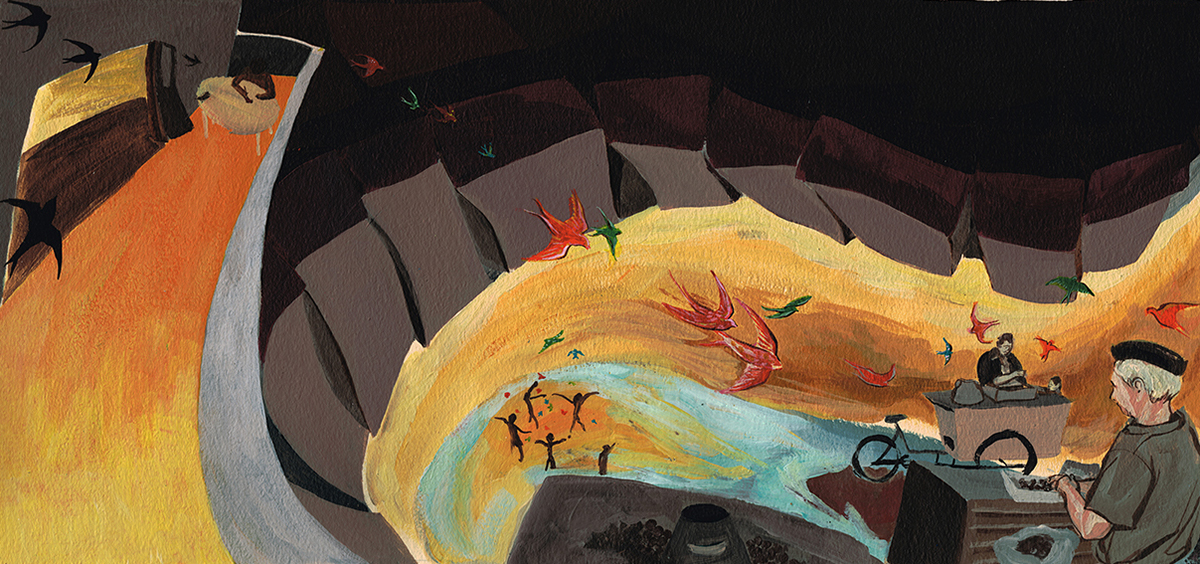
On the image above I had to fit into the same composition two scenarios: the one where the old man was painting swallows and one of the city filled with children who were eager to play with the swallows. I ended up with a distorted view of the old man's balcony in a way that we could both see two scenes at the same time, interacting with each other.

The end of the text is very abstract. It gives the feeling of an emotional bound between the swallows and the old man. So I created an image that showed a similar feeling instead of something literal.


